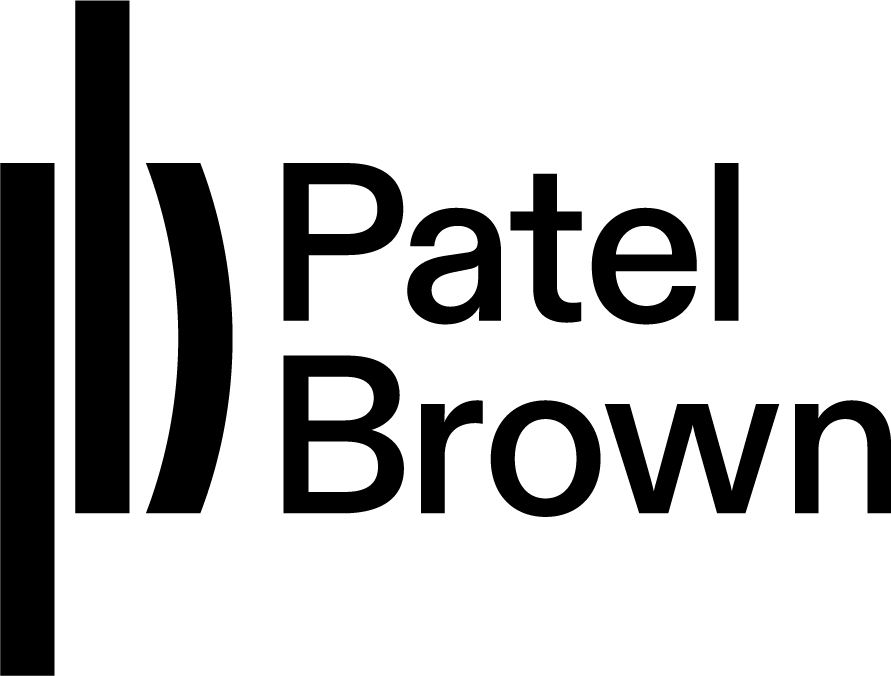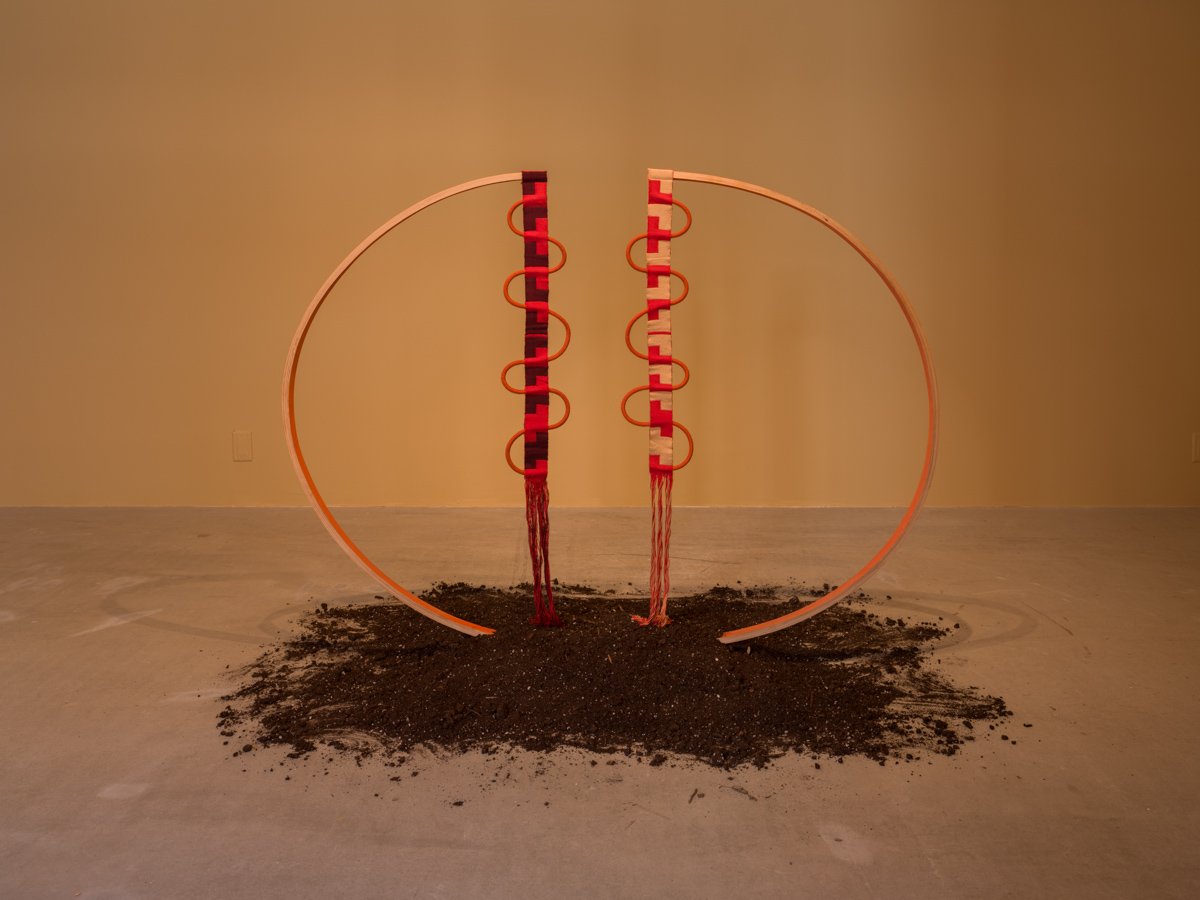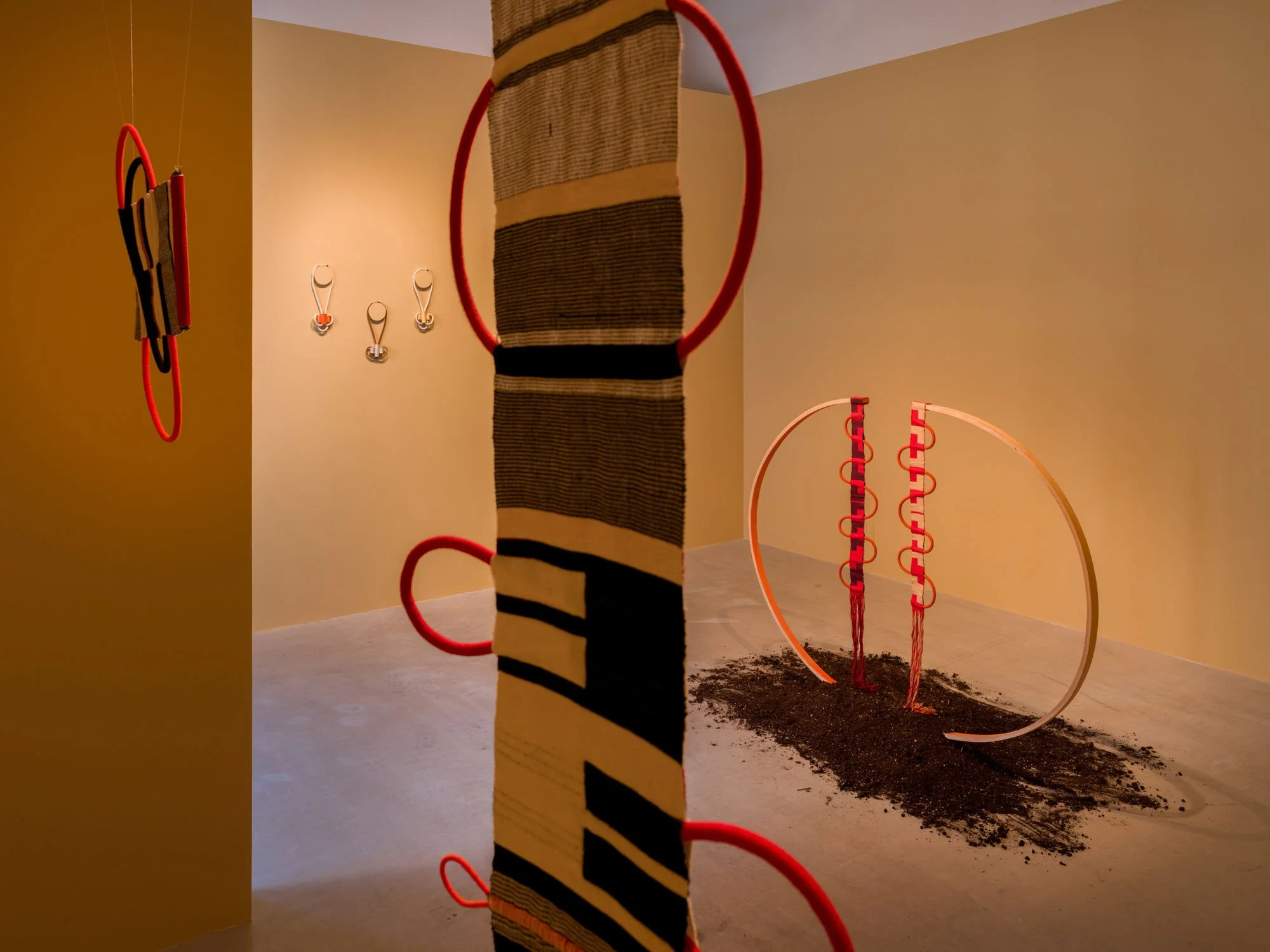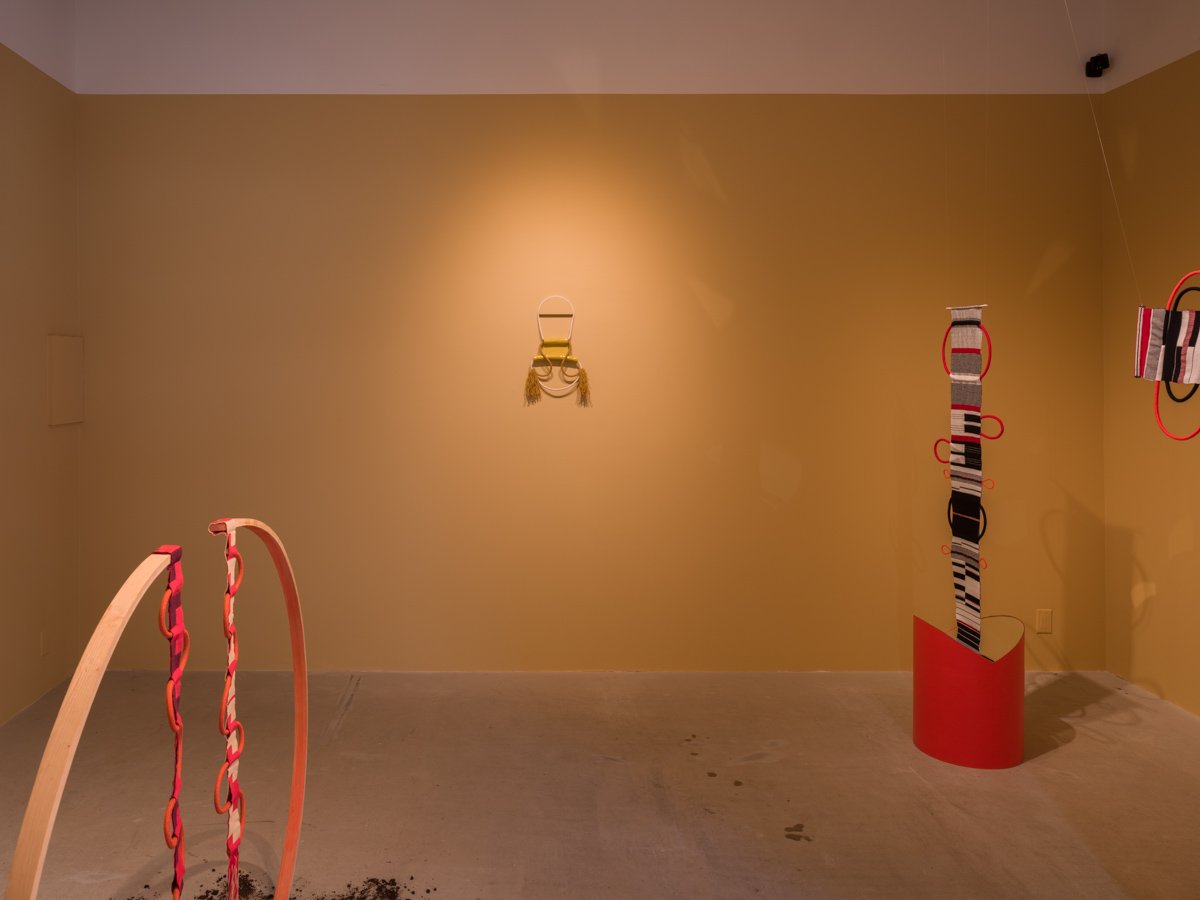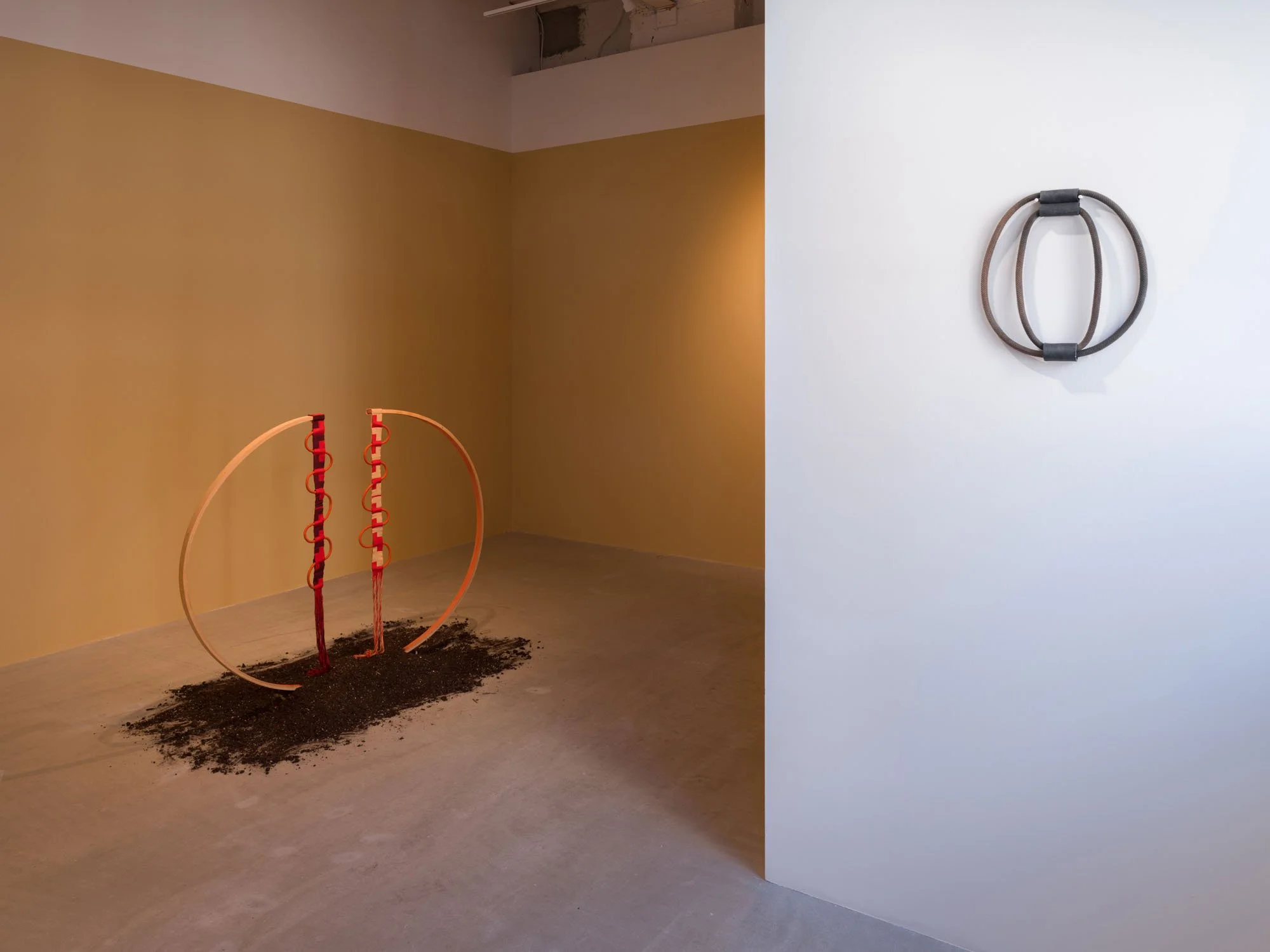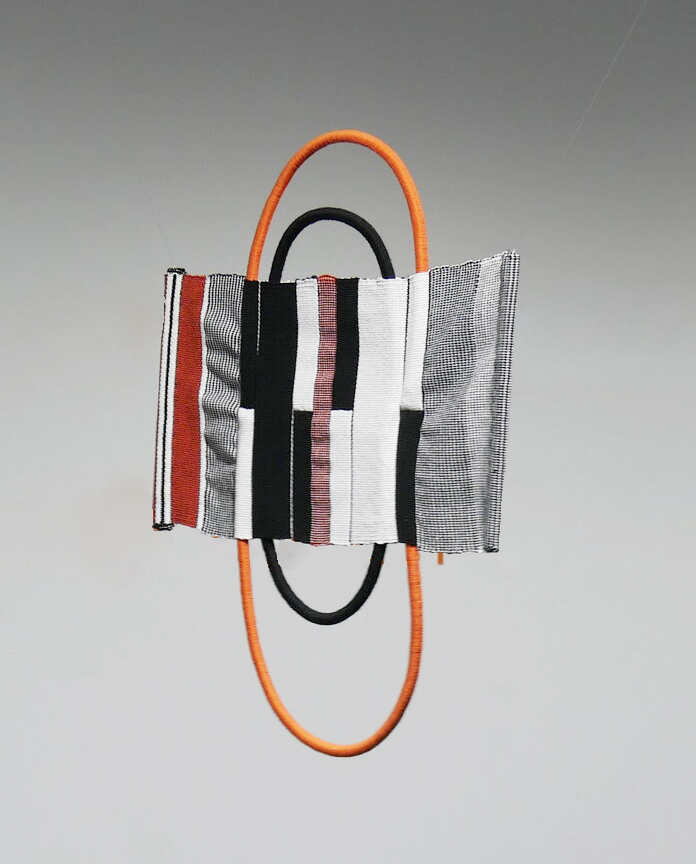21 WADE AVE #2 | TORONTO
SHAYA ISHAQ | But there are new suns | 14 JAN - 18 FEB 2023
Weaving Words
Elegy for a matriarch whose spirit pulses through soil and rises with the sun, eternally. This is where words meet cloth. This is where the practice of weaving becomes the practice of mourning. This is where textile and text meet each other – a sculpture of colourful double cloth and arching coils, paired with bent wood and dark soil – as a lament for the dead. The matriarch is Ishaq’s grandmother who died in Uganda during the pandemic. When their funerary practice necessitated a quick burial that she could not attend, weaving was the way she could extend the period of mourning. The artist explored form in new ways while living with grief, working on a handloom, connecting to her grandmother who was also a weaver. She considered the warp of the cloth as a time plane and the layers of double weaving as multiple temporalities. The word “eternally” finds its expression in the looping form of the coils. “As we mix their essence with the earth, We remember them, And within us, They live” is the last line of an Octavia Butler excerpt that Ishaq calls our attention to.
The only lasting truth is Change tells a different story through cloth. Ishaq names Butler’s The Parable of the Sower and the philosophy of its protagonist Earthseed as guiding compasses for this work. Change is everything and everything is change. Words prompt weaving. Weaving recalls words. Butler’s novel within a novel is mirrored with another double cloth, interlacing coils, and geometric patterns. The nature of double weaving as weaving “twice as much” finds another double in the convex mirror that meets the end of the cloth. It’s a mirror that multiplies the cloth in two additional directions, to extend infinitely – a spatial extension that parallels the infinite time of the eternal.
In the series Mirror, Mirror, Ishaq turns her multidisciplinary creative practice to wearable art. In a deviation from her woven sculptures, where coils loop in and out of and between cloth, the coils of these “adornments” move through handmade clay cylinders. Speaking with Francesca Ekwuyasi in 2020, Ishaq explains, “More and more, I am trying to find inspiration from my own cultural background in East Africa…which requires a lot of digging, but is ultimately worth it because it brings me closer to myself in a way, by allowing me to reconnect with an embodied sense of self.” This recalls Butler, who explained to the Times, “I wrote myself in, since I’m me and I’m here and I’m writing. I can write my own stories and I can write myself in.”
- Deborah Wang
Shaya Ishaq is an interdisciplinary artist, designer, and writer whose research interests are engaged in craft, diaspora, design anthropology, and (afro)futurism. Devoted to materiality, she works with textiles and clay to create wearable art, jewellery, and installations. She is interested in the liminality of rites of passages and explores this through meditative processes such as weaving, felting, and hand built ceramics. Her design palette extends to furniture, objects, and spaces which allows her work to live at the junction of community engagement and creative practice.
Ishaq has studied Fibres & Material Practices at Concordia University and has previously attended Haystack Mountain School of Crafts in Deer Isle, Maine. Shaya is currently a research fellow of the Textiles + Materiality Research Cluster as part of the Milieux Institute for Arts, Culture, and Technology.
Deborah Wang (MFA, M.Arch, OAA) is a Taiwanese Canadian architect, curator and artistic director based in Toronto, with a broad range of experiences in contemporary art, design and architecture that spans two decades.
